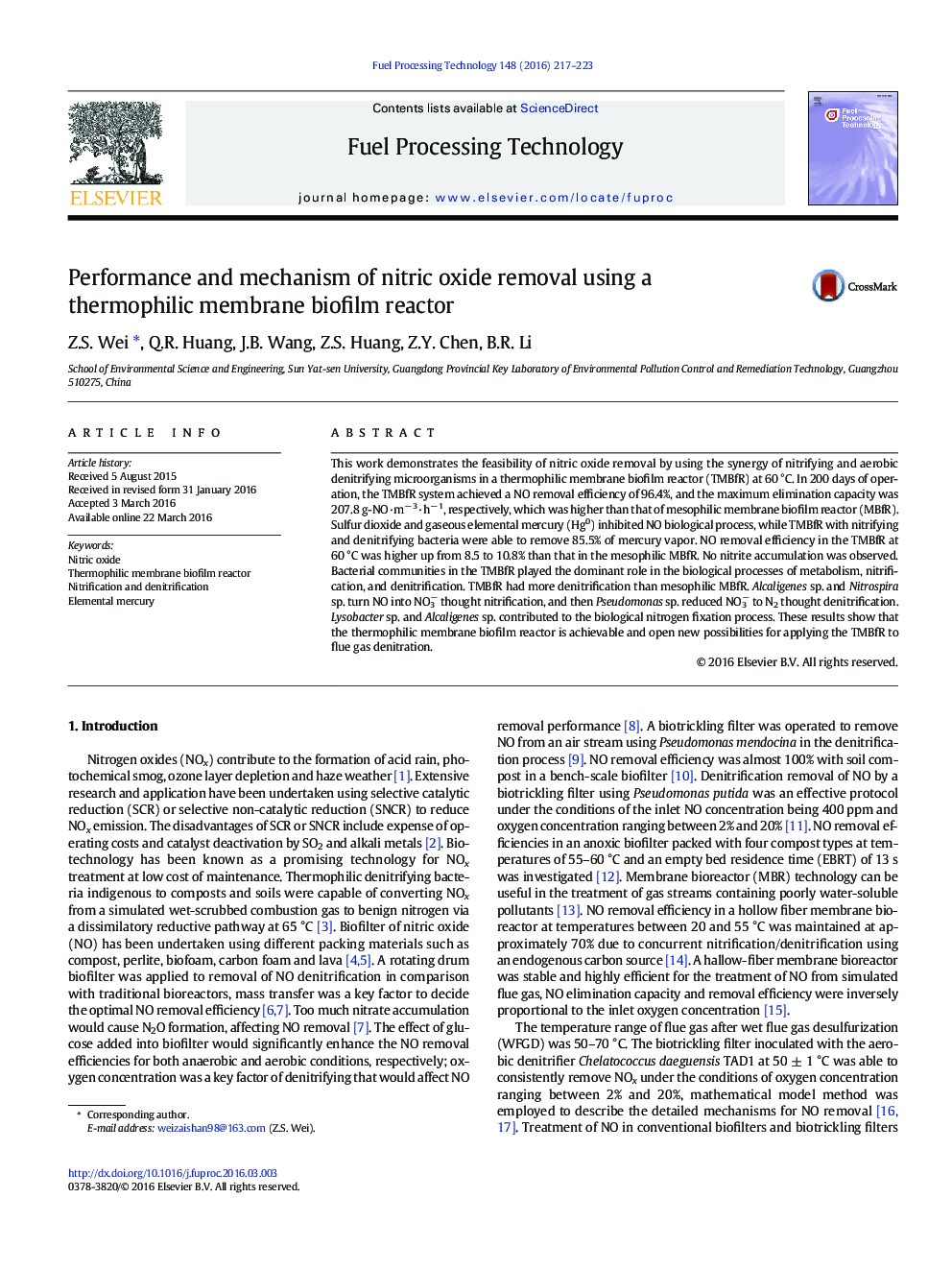| Article ID | Journal | Published Year | Pages | File Type |
|---|---|---|---|---|
| 6656647 | Fuel Processing Technology | 2016 | 7 Pages |
Abstract
This work demonstrates the feasibility of nitric oxide removal by using the synergy of nitrifying and aerobic denitrifying microorganisms in a thermophilic membrane biofilm reactor (TMBfR) at 60 °C. In 200 days of operation, the TMBfR system achieved a NO removal efficiency of 96.4%, and the maximum elimination capacity was 207.8 g-NO·mâ 3·hâ 1, respectively, which was higher than that of mesophilic membrane biofilm reactor (MBfR). Sulfur dioxide and gaseous elemental mercury (Hg0) inhibited NO biological process, while TMBfR with nitrifying and denitrifying bacteria were able to remove 85.5% of mercury vapor. NO removal efficiency in the TMBfR at 60 °C was higher up from 8.5 to 10.8% than that in the mesophilic MBfR. No nitrite accumulation was observed. Bacterial communities in the TMBfR played the dominant role in the biological processes of metabolism, nitrification, and denitrification. TMBfR had more denitrification than mesophilic MBfR. Alcaligenes sp. and Nitrospira sp. turn NO into NO3â thought nitrification, and then Pseudomonas sp. reduced NO3â to N2 thought denitrification. Lysobacter sp. and Alcaligenes sp. contributed to the biological nitrogen fixation process. These results show that the thermophilic membrane biofilm reactor is achievable and open new possibilities for applying the TMBfR to flue gas denitration.
Related Topics
Physical Sciences and Engineering
Chemical Engineering
Chemical Engineering (General)
Authors
Z.S. Wei, Q.R. Huang, J.B. Wang, Z.S. Huang, Z.Y. Chen, B.R. Li,
